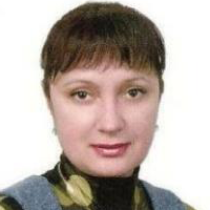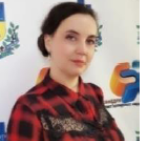International Journal of Image, Graphics and Signal Processing (IJIGSP)
IJIGSP Vol. 17, No. 3, 8 Jun. 2025
Cover page and Table of Contents: PDF (size: 1647KB)
Hybrid System for Image Storage and Retrieval in Big Data Environments
PDF (1647KB), PP.55-84
Views: 0 Downloads: 0
Author(s)
Index Terms
Big Data, Hybrid Image Storage, Relational Database, Nosql, IPFS, Blockchain, Image Compression, Indexing, Performance, Security
Abstract
This paper presents a hybrid image storage model for big data environments. The model combines relational and non-relational (NoSQL) databases, file systems (IPFS), and blockchain technologies to ensure an optimal balance between performance, scalability, and security in image storage. The existing approaches to organising image data storage and image compression methods in decentralised systems are analysed. Optimised image indexing is proposed to accelerate data search and access. A prototype system based on the proposed model was developed, and an experimental study was conducted on various image datasets (medical, satellite, and digital art). The experimental results demonstrate that the hybrid model outperforms traditional approaches: image access time is reduced by ~30% compared to standalone storage systems, providing high scalability (with increased nodes, processing time decreases nonlinearly). The efficiency of image compression in reducing storage costs in blockchain-oriented systems is also confirmed: the WebP format allows file size to be reduced by 40–60% while maintaining acceptable quality (PSNR > 30 dB). The proposed solution is relevant for medical diagnostics, video surveillance systems, geographic information systems, and other fields requiring reliable storage and fast processing of large-scale image datasets.
Cite This Paper
Glib Tereshchenko, Iryna Kyrychenko, Victoria Vysotska, Zhengbing Hu, Yuriy Ushenko, Mariia Talakh, "Hybrid System for Image Storage and Retrieval in Big Data Environments", International Journal of Image, Graphics and Signal Processing(IJIGSP), Vol.17, No.3, pp. 55-84, 2025. DOI:10.5815/ijigsp.2025.03.04
Reference
[1]Koptyra K., Ogiela M.R. Imagechain – Application of Blockchain Technology for Images. Sensors, 2021, 21, 82. doi:10.3390/s21010082.
[2]Filatov V., Semenets V., Zolotukhin O. Data Mining in Relational Systems. Suchasnyi stan naukovykh doslidzhen ta tekhnolohii v promyslovosti, 2020, No. 3(13), pp. 65–76. doi:10.30837/ITSSI.2020.13.065.
[3]Wang Q., Zhu X., Ni Y., Gu L., Zhu H. Blockchain for the IoT and industrial IoT: A review. Internet of Things, 2020, 10, 100081.
[4]Ashwin B., Raghuram T., Reza S.M., et al. Big Data Analytics in Healthcare. Journal of Biomedical Informatics, 2020, 79. doi:10.1155/2015/370194.
[5]Kimpel J.F. Critical Success Factors for Data Warehousing: a classic answer to a modern question. Issues in Information Systems, 2013, 14(1), pp. 376–384.
[6]Jarke M., Lenzerini M., Vassiliou Y., Vassiliadis P. Fundamentals of Data Warehouses. Springer-Verlag, Berlin, Heidelberg, New York, 2013. 224 p.
[7]Blanco C., de Guzmán I.G.R., Fernández-Medina E. An architecture for automatically developing secure OLAP applications from models. Information and Software Technology, 2015, 59, pp. 1–16.
[8]Gupta A., Agarwal D., Tan D., Kulesza J., Pathak R., Stefani S., Srinivasan V. Amazon Redshift and the Case for Simpler Data Warehouses. Proceedings of the 2015 ACM SIGMOD International Conference on Management of Data, 2015, pp. 1917–1923.
[9]Cuzzocrea A., Bellatreche L., Song I.-Y. Data Warehousing and OLAP over Big Data: Current Challenges and Future Research Directions. Proceedings of the Sixteenth International Workshop on Data Warehousing and OLAP, 2013, pp. 67–70.
[10]Kuchuk H.A. Metod syntesu lohichnoi struktury merezhevoi bazy danykh. Systemy obrobky informatsii, 2001, No. 2, pp. 32–37.
[11]Pryimak D.V., Akimyshyn O.I. Shliakhy pobudovy konfigurovanykh skhovyshch danykh na osnovi platformy Hadoop. [Electronic resource] / D.V. Pryimak, O.I. Akimyshyn // Available: http://eom.lp.edu.ua/seminar/spr/pryjmak.doc
[12]Shakhovska N.B., Pasichnyk V.V. Skhovyshcha ta prostory danykh. Monograph. Lviv: Vydavnytstvo Lvivskoi politekhniky, 2009. – 244 p.
[13]Shaohua J., Na W., Jing W., et al. (2019). Combining BIM and Ontology to Facilitate Intelligent Green Building Evaluation, 33(1), 04018062. doi: 10.1061/(ASCE)CP.1943-5487.0000786
[14]Céline F., John B., et al. (2018). Choosing the best algorithm for event detection based on the intended application: A conceptual framework for syndromic surveillance. Journal of Biomedical Informatics, 86, 117-129. doi: 10.1016/j.jbi.2018.08.001
[15]Yojna A., et al. (2021). A Survey on Deep learning Models for Effective Content Based Image Retrieval. International Journal of Computer Science Trends and Technology (IJCST) – Volume 9 Issue 3
[16]Kyrychenko I., Nazarov O., Huliiev N., Avdieiev O. Selection of Artificial Neural Networks for Disease Prediction. CEUR-WS, 2023, v. 3387, Volume I: Machine Learning Workshop, pp. 236-248. ISSN 16130073.
[17]Sharonova, N., Kyrychenko, I., Gruzdo, I., Tereshchenko, G., “Generalized Semantic Analysis Algorithm of Natural Language Texts for Various Functional Style Types”, 2022 6th International Conference on Computational Linguistics and Intelligent Systems (COLINS-2022), 2022. – CEUR-WS 3171, 2022, ISSN 16130073. - Volume I: Main, РР. 16 - 26.
[18]Hongyan S., et al. (2021). Design of the online platform of intelligent library based on machine learning and image recognition. Microprocessors and Microsystems, 3. https://doi.org/10.1016/j.micpro.2021.103851
[19]Tong L., Jinzhen W., Qing L., et al. (2023). High-Ratio Lossy Compression: Exploring the Autoencoder to Compress Scientific Data. IEEE Transactions on Big Data, 6(2), 22-36. doi: 10.1109/TBDATA.2021.3066151
[20]Zheng Y., Xie X., Ma W., et al. (2019). Distributed Architecture for Large Scale Image-Based Search. IEEE Xplore. doi: 10.1109/ICME.2007.4284716.
[21]Chen M., Chen F., Yang J., et al. (2019). A remote-sensing image-retrieval model based on an ensemble neural networks. Big Earth Data, 351-367. doi: 10.1080/20964471.2019.1570815
[22]Gu C., Bu J., Zhou X., et al. (2022). Cross-modal image retrieval with deep mutual information maximization. Neurocomputing, Vol. 496, pp. 166-177. doi: 10.1016/j.neucom.2022.01.078.
[23]Hussain A., Li H., Muqadar A., et al. (2022). An Efficient Supervised Deep Hashing Method for Image Retrieval. Entropy, Vol. 24, Issue 10. doi: 10.3390/e24101425.
[24]Leskovec J., Rajaraman A., Ullman J.D. Mining of Massive Datasets. Cambridge University Press, vol. 1, no. 3, pp. 77-134, November 2014
[25]Dwivedi Y.K., et al. Exploring the Darkverse: A Multi-Perspective Analysis of the Negative Societal Impacts of the Metaverse. Information Systems Frontiers. 2023. Vol. 25. No. 11. P. 2071–2114. DOI: https://doi.org/10.1007/s10796-023-10400-x
[26]Damen J., Hector J., Perrey R., Ney H. Avtomatychna klasyfikatsiia erytrotsytiv za dopomohoiu hustyn haussovoho mikstury. Proc. Bildverarbeitung für die Medizin. – 2000. – P. 331–335.
[27][Kostrarydo L. Metody analizu medychnykh zobrazhen: stratehii otsinky dlia analizu medychnykh zobrazhen. Taylor & Francis, USA, 2005. – P. 433–471.
[28]Kumar B.R., Joseph D.K., Tiger T.V.S. Segmentatsiia klityn krovi na osnovi enerhii. Proc. 14th Int. Conf. on Digital Signal Processing (DSP), July 1–3, 2002, Santorini, Greece, Vol. 2, pp. 619–622.
[29]Bamford P. Empirical Comparison of Cell Segmentation Algorithms Using Annotated Dataset. Proc. IEEE Int. Conf. on Image Processing, 2003, Vol. 2, pp. 1073–1077.
[30]McInerney T., Terzopoulos D. Deformable Models in Medical Image Analysis: A Survey. Med. Image Anal., 1996, pp. 91–108.
[31]Hu, Z., Uhryn, D., Ushenko, Y., Korolenko, V., Lytvyn, V., & Vysotska, V. (2024, January). System programming of a disease identification model based on medical images. In Sixteenth International Conference on Correlation Optics (Vol. 12938, pp. 59-62). SPIE.
[32]Oleksiy Tverdokhlib, Victoria Vysotska, Olena Nagachevska, Yuriy Ushenko, Dmytro Uhryn, Yurii Tomka, "Intelligent Processing Censoring Inappropriate Content in Images, News, Messages and Articles on Web Pages Based on Machine Learning", International Journal of Image, Graphics and Signal Processing, Vol.17, No.1, pp. 107-164, 2025.
[33]Tchynetskyi, S., Peleshchak, R., Peleshchak, I., & Vysotska, V. (2021, September). A Neural Network Development for Multispectral Images Recognition. In 2021 IEEE 16th International Conference on Computer Sciences and Information Technologies (CSIT) (Vol. 2, pp. 278-284). IEEE.





